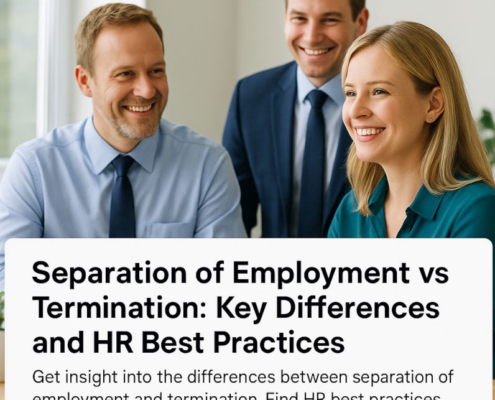Introduction
If you are employed in California, you may be curious about the way your employer determines your work hours using the state’s time rounding regulations. If the figures do not add up as you would anticipate, it can be easy to get the sense that you’re overlooking something. “Does my company use an hourly clock rounding method?” is a question that many employees may have.
Perhaps you’ve also asked yourself, “Is time clock rounding actually legal?” “Does this affect my weekly salary?” These issues directly affect their compensation, and workers might be reluctant to voice them publicly.
We know it’s difficult. However, it’s essential to comprehend California Rounding Rules 2025.
What Federal Regulation Says Regarding Rounding Time Clocks
A federal legislation known as the Fair Labor Standards Act (FLSA) provides some information about time clock rounding. Employers may choose to round worker clock-in & clock-out times.
Usually, it’s to the closest five, 10, or even quarter-hour.
1. The Rule of 1-7, 8-14
You can round down your time if it is between one and seven minutes.
Rounding up is required if it lies between 8 and 14 minutes. This is equivalent to a quarter-hour of effort. The goal is to preserve employees’ working time.
2. Greater Increments May Be Dangerous
Rounding to larger time blocks, like the closest half-hour, may be an option for some workplaces.
This is not advised. It might lead to major problems. It’s possible that employers are violating the California Rounding Rules 2025.
Why Time Rounding May Be Problematic
Time rounding has important legal ramifications for both employers and employees, which are frequently disregarded at first. It’s not simply about making payroll easier. Employees could be underpaid if rounding often benefits the company by lowering documented work hours. The discrepancies might not seem like much initially. They can mount up over time. It can result in significant salary losses.
1. Effects of the Minimum Wage
Rounding down time may result in minimum wage infractions. It could lower an employee’s compensation below what is required by law. Wages may fall below the required minimum if businesses routinely round down. It might have major legal repercussions.
2. Calculating Overtime Pay
When it comes to overtime compensation, time rounding might cause serious problems. Rounding down hours can affect an employee’s eligibility for overtime. An employee may lose out on the additional compensation they are entitled to if their employer rounds down hours that must have been considered overtime.
California’s Position on Time Clock Rounding Regulations
At first, California used identical time rounding standards as numerous other states in accordance with FLSA regulations. In See’s Candy Shops vs Superior Court, the California Supreme Court examined the matter in 2012 and decided that time rounding was acceptable if it was “fair & neutral,” guaranteeing that workers were paid for their actual labor. Since then, as employment legislation and workplace norms have changed, so too have California’s time rounding regulations.
California Rounding Rules 2025: Present Status
It is a little complicated (still possible though). The regulations have been tightened by recent court decisions.
Consider the Troester vs Starbucks Corp. case. In this case, an employee filed a lawsuit for the unpaid time spent on chores after clocking out.
Using the national “de minimis” regulation, which permits brief time skips, the court first sided with Starbucks. However, the California Supreme Court eventually overruled the ruling that all time worked must be compensated for.
How About Breaks That Are Rounded?
Not at all. The court decided that rounding lunch break periods is prohibited in the 2021 judgment, Donohue vs AMN Services. Employers are not allowed to round up a worker’s lunch break time if it is less than the mandatory 30 minutes.
Workers who take shorter breaks have the right to reimbursement for the time lost, and even little cuts can have a big impact over time.
The California Rounding Rules for 2023: A Significant Shift
In 2023, California’s time rounding regulations were further clarified. Significant changes were brought about by the Court of Appeal’s decision in Camp vs Home Depot USA, which held that employers must pay workers minute-by-minute if they are able to track their precise working hours.
In one instance, Home Depot kept track of workers’ precise work hours but neglected to compensate them, which resulted in unpaid wages building up over time. Although the court didn’t completely prohibit time rounding, this ruling raised questions about the precedent established by See’s Candy and indicated a change toward more stringent enforcement of precise salary payments.
1. What Should California Employers Do?
To ensure that they meet pay standards, firms in California should examine and update their time rounding practices. Any rounding procedures must be used equitably and never lead to underpayment of workers.
Costly errors can be avoided by keeping correct records and abiding by the California Rounding Rules 2025. Finding out that a small payroll error that has been repeated over time has resulted in serious financial and legal repercussions is not something that a company wants.
2. The Advantages of Using a Precise Time-Tracking System
There are advantages to selecting accurate systems, even if businesses choose to round time. The solution is to use accurate tracking.
To keep things on schedule, a solid California break-tracking program keeps track of every detail, right down to the last second. You may ensure that they receive full compensation for their time spent at work by doing this.
Calculating all time periods & hours is made simpler by these solutions. To be able to avoid any issues on the road, the employee must also feel that they are appropriately cared for in terms of labor standards. Accurate timing is the safest method.
3. Watch California’s Labor Law Development
For all legal activities and compensation, staying current is essential. California seeks to uphold workers’ rights and encourages firms to act morally by giving all employees a fair wage.
This ought to continue as laws and legal cases will continue to be decided. It’s possible that this will happen sooner rather than later. Setting up time tracking will be vital.
Conclusion
In California, time rounding seems to be coming under more scrutiny. Although companies used it for pragmatic reasons at first, legal trends are moving toward more accurate payroll procedures.
Time rounding continues to be permitted, but only if it maintains neutrality or fairness and guarantees that workers receive full compensation for the time they actually labor. All levels of courts are still pushing for accurate timekeeping, which emphasizes how crucial it is to compensate workers for each minute they put in.
The idea that minor increases in work hours can be ignored for convenience has been rejected in California. Accurate timekeeping is important for payroll compliance as well as making sure workers have the right amount of rest & break time. Using systems that measure time in exact increments, like to the closest tenth of an hour, is the most equitable method. Additionally, it is legally forbidden to round meal breaks; according to the California Rounding Rules 2025, breaks of thirty minutes must be fully observed.































